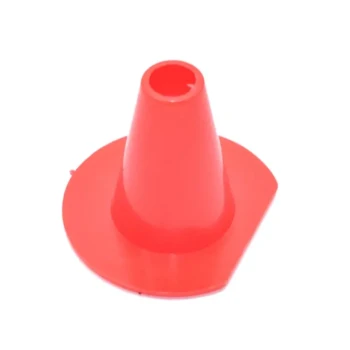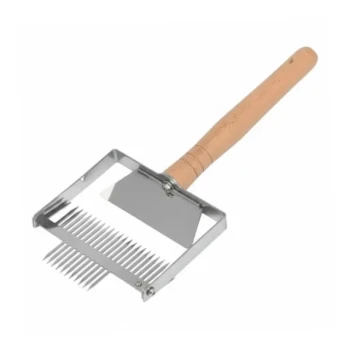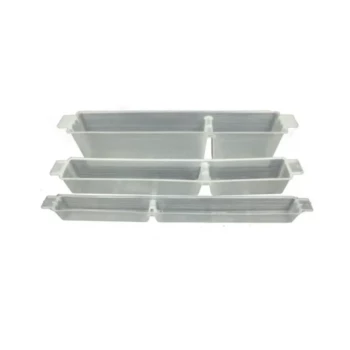In short, a queen excluder should be placed on a strong, established hive when you add your first honey super for the season. This is typically done in the spring as the main nectar flow begins, but only after nighttime temperatures are consistently staying above 50°F (10°C) to ensure the queen's safety.
The decision to use a queen excluder is less about a specific calendar date and more about a strategic assessment of your colony's strength, the current weather, and the availability of nectar. It is a tool to manage space, not a mandatory piece of equipment for every hive.

The Core Purpose: Separating Brood from Honey
A queen excluder is simply a screen with gaps large enough for worker bees to pass through but too small for the larger queen bee.
Why Separate the Queen?
The primary goal is to keep the queen in the lower brood box(es) where she lays eggs. This prevents her from laying eggs in the honey supers—the boxes you intend to harvest.
Keeping the supers free of brood (bee eggs, larvae, and pupae) results in a cleaner honey harvest and prevents the destruction of developing bees during the extraction process.
Critical Checks Before You Add the Excluder
Timing is crucial. Adding an excluder at the wrong time can hinder your colony's growth or even lead to the queen's death. Before you proceed, verify these three conditions.
1. Colony Strength
The hive must be strong and populous. A good rule of thumb is that the brood box(es) should be at least 80% full of bees, brood, and food stores.
Placing an excluder on a weak or small colony can restrict its ability to build up, as the bees may be hesitant to move through it into the new space.
2. Stable Weather
Never add an excluder if there is a risk of a late cold snap. Nighttime temperatures must be reliably above 50°F (10°C).
If the temperature drops, the bee cluster will contract to stay warm. If the cluster moves up into the super for warmth or to access food, an excluder can trap the queen below, leaving her to freeze.
3. The Start of Nectar Flow
The ideal moment to add the excluder is right when you add your first honey super. This coincides with the beginning of the main nectar flow in your area.
Adding it too early is pointless and risky. Adding it too late means the queen may have already started laying eggs in the box you intended for honey.
How to Properly Install the Excluder
Once your hive meets the criteria, the installation process is straightforward.
Find the Queen
First, perform a quick inspection to ensure the queen is in the bottom brood box. This confirms you won't accidentally trap her above the excluder.
Place the Excluder
The queen excluder is placed directly on top of the uppermost brood box.
Add the Honey Super
The honey super is then placed directly on top of the queen excluder.
"Bait" the Bees Upward (Optional but Recommended)
Worker bees can sometimes be reluctant to cross the excluder. To encourage them, take one or two frames of sealed brood or nectar from the brood box and place them in the center of the honey super above.
Replace the moved frames in the brood box with empty foundation or drawn comb. The presence of brood in the super will act as a powerful magnet, drawing worker bees up through the excluder to care for it.
Understanding the Trade-offs and Risks
While useful, queen excluders are a subject of debate among beekeepers. You must be aware of the potential downsides.
Hindrance to Worker Bees
The excluder can create a bottleneck, slowing worker bee traffic. Some argue this can slightly reduce the efficiency of foraging and honey storage, leading to a smaller harvest.
Risk of a "Honey-Bound" Brood Nest
If the nectar flow is heavy and the bees are slow to move into the supers, they may begin to store nectar in the brood chamber. This can fill cells the queen needs for laying, restricting her ability to lay eggs and potentially triggering the colony to swarm.
When to Remove the Excluder
The excluder's job is finished when the nectar flow ends and you harvest your honey. It must be removed before winter. Leaving it on during winter is a common and fatal mistake, as the winter cluster can move upward, leaving the queen to freeze below.
Making the Right Choice for Your Goal
Ultimately, using an excluder is a management decision based on your beekeeping philosophy and goals.
- If your primary focus is a pure, brood-free honey harvest: Use the excluder once the hive is strong, the weather is stable, and you are adding your first honey super.
- If your primary focus is minimizing hive intervention: You can choose not to use an excluder, but you must be prepared for the queen to lay in your honey supers, which complicates the harvest.
- If your primary focus is colony health and you are in doubt: It is always safer for the colony to wait or omit the excluder entirely.
By aligning its use with your colony's natural cycle, the queen excluder becomes a predictable and effective tool for a successful honey harvest.
Summary Table:
| Key Factor | Requirement for Placement | Why It Matters |
|---|---|---|
| Colony Strength | Brood box is 80% full of bees, brood, and food. | A weak colony may be hindered; a strong one can utilize the new space. |
| Weather Stability | Nighttime temps consistently above 50°F (10°C). | Prevents the queen from being trapped and freezing if the cluster moves. |
| Nectar Flow | Beginning of the main nectar flow in your area. | Ensures the bees are motivated to move up and fill the honey super. |
Ready to Equip Your Apiary for a Bountiful Season?
For commercial apiaries and distributors, precise timing and reliable equipment are the foundation of profitability. HONESTBEE supplies the durable, beekeeper-tested queen excluders and other essential beekeeping supplies you need to manage your hives effectively and maximize honey production.
Contact HONESTBEE today to discuss your wholesale needs and ensure your operation is equipped for success.
Visual Guide

Related Products
- Professional Plastic Queen Excluder for Modern Beekeeping
- High Performance Plastic Queen Excluder for Beekeeping and Apiary Management
- Premium Wood Framed Metal Wire Queen Bee Excluder
- Plastic Queen Bee Excluder for Bee Hive Wholesale
- Metal Queen Bee Excluder for Beekeeping
People Also Ask
- Why are queen excluders recommended for Flow Hives? Prevent Brood Damage for a Clean Harvest
- What are the main advantages of using a queen excluder in beekeeping? Simplify Hive Management & Harvest
- What is the role of a queen excluder when adding a super? Ensure Brood-Free Honey Harvests
- How does a queen excluder work? Master Hive Management for Pure Honey Harvests
- What is the primary function of a queen excluder in beekeeping? Control Hive Layout for Efficient Honey Harvesting



















